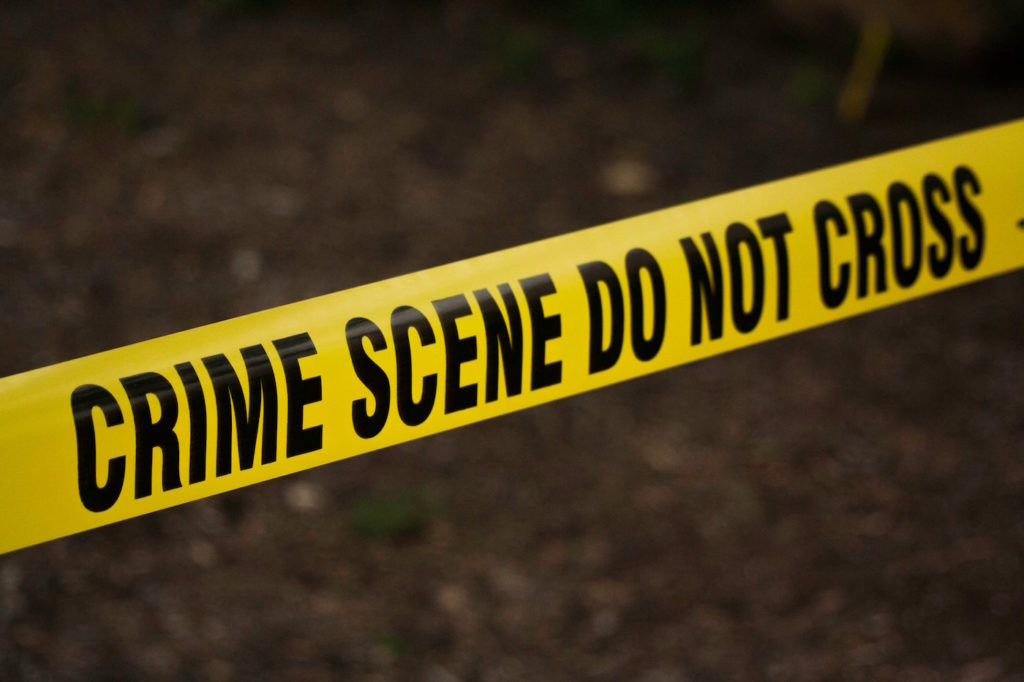Charges of fake news are now ubiquitous. Although the term was employed by progressive critics of President Trump before the president himself popularized it, such accusations have become most common from conservatives wrestling with media partisanship. The term now implies not just news of events that never actually occurred, but includes media “distortion” of real news aimed at advancing a political agenda. Yet there remains little evidence, outside of occasional controversies, that members of the media intentionally alter news stories to fit their political wishes.
What is more likely is that reporters and editors have their own biases that seep into their stories. Most media personnel attempt to be fair—and perceive themselves accordingly—but we all have biases that can and typically do color our perspectives. While reporters and editors undoubtedly try to account for their biases in reporting, it is less clear how often they succeed.
A colleague and I decided to examine how successful the media are in such efforts. The result is my latest book, Prejudice in the Press, published late last year. We made several discoveries, but for this essay, I want to focus on one particular dimension: how the media deal with the reporting of “hate.” The media have provided us warnings of alt-right hatred they believe is motivated by President Trump. Even before the recent flurry of media activity on hate, there were organizations, such as the Southern Poverty Law Center, that specialized in helping the media to report on hate. There has also been work looking at the hatred exhibited by radical progressive groups such as Antifa.
The issue of hate is important because claims of hate can be used to sanction individuals and groups, and to justify sympathy for victimized groups. The ability to accuse individuals or groups of hate has become a powerful tool that interest groups use to obtain resources and combat their ideological opponents. If the way members of the media define hate is shaped by their own personal biases, then some groups may have more access to that tool than others.
Start your day with Public Discourse
Sign up and get our daily essays sent straight to your inbox.A Different Way to Research Media Bias
Most research looks at actual stories to see if reporters might treat those stories differently based on the actors in the news. For example, do they focus more on crime stories with black criminals than white criminals? Or do they pay attention to the accomplishments of businessmen rather than businesswomen? Maybe they are more concerned about a madman shooting up a mosque rather than one shooting up a Baptist church. If news personnel treat stories differently due to the characteristics of the actors in the stories, then we have a case of bias.
But we decided to do something different. We wanted to use an audit design to see if we can capture potential media bias. So we emailed a survey to reporters and editors at a variety of newspapers across the country. In the initial stage of this research, we sent out a survey to 2,400 newspaper editors and reporters collected by a listing purchased from Meltwater (a media intelligence company). After collecting data from these newspaper personnel, we followed up with surveys to television and social media personnel as well, but for this essay I focus on the results from newspaper media personnel.
We provided them with a questionnaire with eleven different scenarios. We changed the characteristics of individuals in those scenarios to create two different formats of the survey. For example, in one scenario, a black man was described as robbing a white man. In an alternative version of the survey, it was a white man robbing a black man. In another scenario, a Baptist church was shot up; in the alternative version, it was a mosque. A respondent received only one version, with no indication that any other version existed. He or she did not know that we were testing to see if receiving a different set of scenarios would influence his or her response.
For each scenario, we asked the respondents if they would publish the story and where (i.e., front page, local section, news brief). That produced an ordinal measure of how important they felt it was to publish the story and how much prominence it should be given. We also asked them an open-ended question about what they thought of the story and why they placed it where they did, or why they would not run the story. We included scenarios with alternatives that tested for bias based on race, gender, sexual preference, and religion.
Interpreting the Results
We probed for bias in two ways. We looked to see whether the respondents were more or less willing to publish a story when we changed the characteristics of the individuals in the scenarios. We also looked for bias in how they described the importance of the scenarios in their written answers. If bias was not an issue, then our respondents would treat the scenarios the same no matter how we described the actors in them. When asked what was important about the stories, they would also state similar reasons regardless of which version of the scenario they were given.
With one exception, mentioned below, the notion of hate rarely was mentioned in responses to scenarios dealing with issues of race and sex. But there were interesting results in religion and sexual preference scenarios. In two of our scenarios, we transposed Christians with Muslims (a scenario about a mass shooting at a religious institution) and with sexual minorities (a scenario about a teacher making either homophobic or Christianophobic statements). In the religious institutions shooting scenarios, the respondents wrote little about hate when told that a Baptist church had been attacked. They were more likely to focus on the shooter. They wrote significantly more about hate when it was a mosque that was attacked. In the “bigoted professor” scenario, the respondents wrote about freedom of speech rather than hateful speech when the professor was reported to have made Christianophobic comments. But this was not true when writing about the professor making homophobic comments. In both scenarios, our respondents were relatively unwilling to envision hate as a motivator when told that the victims were Christians, but they were willing to do so when other groups were targeted.
In our scenarios dealing with sexual preference, we found that the respondents were very open in writing about the problem of hate and bigotry against sexual minorities. Some respondents wondered whether the professor should keep her job after making homophobic remarks. None of the respondents expressed such a concern when the professor made Christianophobic remarks.
We also presented a scenario involving the shooting of a couple. In one version, the couple was interracial. In the alternative version, the victims were a same-sex couple. Our respondents wrote more about the shooting being a hate crime when the victims were a same-sex couple than when they were an interracial couple (although some did see the interracial shooting as a hate crime). When the interracial couple was shot, there was more emphasis on investigating the crime.
Media Personnel Focus on Hate Based on Sexual Preference
Our findings suggest that the idea of being victimized by a hate crime is more relevant to media personnel on issues of sexual preference than on those of race. This is especially surprising since the Southern Poverty Law Center started with a focus on race-based hate crimes. It seems that in the mind of the media sexual minorities have overtaken African-Americans as individuals most likely to be affected by hate.
Our research indicates that members of the media are most likely to attribute crimes to hate and bigotry when sexual minorities are victims and least likely to do so when Christians are victims. Again, sexual minorities are even more likely to be seen as victims than African-Americans. It is possible that sexual minorities are more likely to be victimized. However, it is also possible that reports of sexual minorities as victims of hate are published more frequently because media personnel are primed to think of sexual minorities as victims more readily than other social groups.
Although Christians are not seen as having a claim of victimization, this does not mean that reporters and editors are unwilling to report on crimes where Christians have been harmed. We did not find a statistically significant difference in the willingness of reporters and editors to put the Baptist church story in the front section of the paper or to cover it at all when compared to the story about the mosque. It is unfair to argue that media personnel would not care if Christians died in a church shooting. Nevertheless, our respondents were not as likely to see the crime as a result of hatred of Christians as they were to see the exact same crime as a result of the hatred of Muslims. Likewise, our respondents were less likely to see the hateful professor as singling out Christians as opposed to singling out gays. It seems less likely that reporters and editors see attacks against Christians as based on a hatred of Christians and more likely to see them as bad things that happen to have happened to Christians.
Christianophobia
My earlier work on Christianophobia may shed light on why we found such a difference. In that work, I discovered that those with irrational hatred of Christians were more likely to be white, male, highly educated, wealthy, politically progressive, and non-religious. Except for wealth, these are characteristics that tend to be found among many in the news media. Thus, they may either have some degree of anti-Christian bias themselves, or they may work in a subculture where such bias is commonplace. This may make it harder for them to accept that anti-Christian hatred exists and can have real consequences.
An important implication of this finding is that activists of different social groups have contrasting incentives in using the media to press their case. Activists for sexual minorities can count on a sympathetic media that will allow them to illustrate ways they have been victimized. Christian activists cannot count on the media to express their frustrations at being victimized. This difference may result in a lack of trust on the part of many Christians toward major media outlets and make them more vulnerable to believing President Trump when he talks of “fake news.”
Conclusion
Ultimately it is in the interest of media personnel to address possible bias within their ranks. Much of the media fragmentation may be tied to the frustration of certain groups who feel that their interests are not addressed by mainstream media entities. Concerning the issue in this essay, I suggest that developing uniform criteria for labeling incidents as “hate” can be an initial step toward directly addressing that particular way bias has manifested itself. As other issues of bias emerge from future examination of our data or other research, future steps can be taken to address media bias. If members of the media are more intentional in addressing their bias, then perhaps they can reduce the appeal of alternative media outlets by increasing the level of trust within social groups that today do not feel represented in the media.














